The MSTU Mission Control Center is an important element of space education. With its help, it is possible to perform the whole range of tasks of control of the spacecraft flight, conduct scientific and technological experiments, and quickly analyze service information and scientific data. MCC-B is equipped with facilities for processing telemetric information, storing it and providing it to consumers.
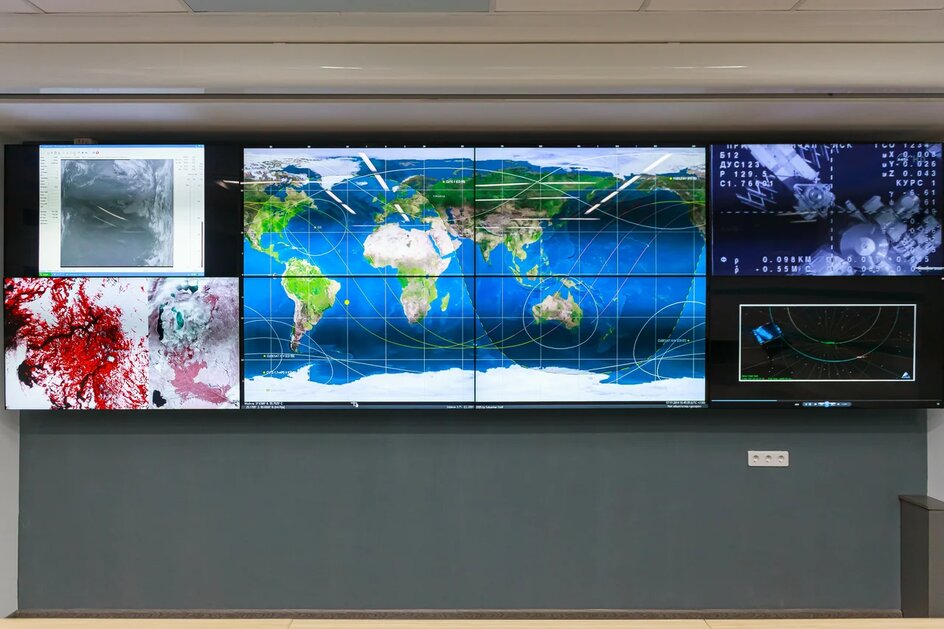
MCC-B was created as part of the scientific and educational project for the creation of small spacecraft "Baumanets" and "Baumanets-2". Currently, the center is used to work with the orbital constellation of nanosatellites "Yarilo No. 1" and "Yarilo No. 2", developed by students, graduate students and young specialists of the Moscow State Technical University. Bauman. On September 28, 2020, the Yarilo nanosatellites were launched into Earth's orbit from the Plesetsk cosmodrome.
Satellite design
Yarilo is a group of 2 nanosatellites "Yarilo No. 1" and "Yarilo No. 2" for the study of the Sun and solar-terrestrial connections. A feature of the mission is the presence on the spacecraft of an experimental deployable design of the "solar sail" type, with the help of which it is planned to build a grouping and passive deorbiting. This project has a significant educational component - all design work, development of devices and their service systems, manufacturing, experimental testing, integration of the payload, preparation for launch, management and organization of work was carried out by students, graduate students and young specialists - the team of the University Youth Space Center. ... The accumulated knowledge, documentation, experience, material part are used to enrich educational programs.

Internal layout of the Yarilo spacecraft
The payload on the first apparatus is a spectrophotometer for recording solar activity (developed by the PN Lebedev Physical Institute, RAS).
The detector allows monitoring in the soft X-ray range of 0.5-15 keV, including observation of microflares, as well as performing spectral diagnostics of plasma in the objects under study. It is believed that we live in the atmosphere of the Sun, and streams of the solar wind (solar plasma ejected from the Sun) strongly affect the Earth. The frequency and intensity of solar flares depends on the 11-year cycle of solar activity. Now the Sun has left the minimum of activity and is starting to accelerate. At times when the Sun is active, flares occur on it, which the apparatus will study. During flares, a mass of plasma is ejected into space along the radius from the sun, and if the Earth, moving in orbit, gets into this ejection, we have geomagnetic storms.
Plasma in the Earth's magnetic field is "kicked" and rotated along the magnetic lines, and as a result, it enters the Earth's magnetic poles. At this point, communications and power grid failures may occur, or, for example, pilots flying over the North Pole will receive a dose of radiation. Predicting such outbreaks is a major challenge for scientists. In 8 minutes, the ejected X-ray quanta reach the Earth at the speed of light so that they can be recorded by a special device in orbit. The trazient itself (plasma ejection) reaches the Earth in a day or two, it flies much slower (at a speed of about 1000 km / s), which allows you to take the necessary measures in advance.
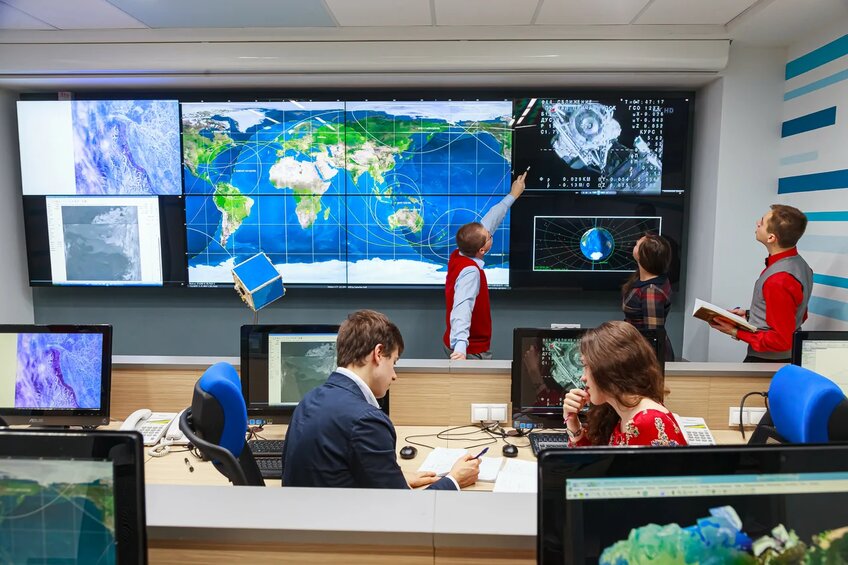
The payload of the second apparatus is a detector of gamma radiation and charged particles (DeKoR is a development of the D.V. Skobeltsyn Research Institute of Nuclear Physics, Lomonosov Moscow State University). The tasks of the device are to study fast variations in electron fluxes in the gap between the radiation belts, as well as to study the dynamics of particle fluxes and gamma radiation in low orbits, depending on geomagnetic conditions in the range of 0.1-2 MeV. It allows you to study cosmic radiation, which negatively affects the organism of living beings and technology, and creates barriers to distant space missions.

External layout of the Parus-MGTU vehicles
In addition to the payload for space weather research, the satellites are equipped with a two-bladed rotary-type solar sail, the design of which is being tested on board the ISS "Parus-MSTU". It is known that sunlight can push and accelerate objects in outer space, which is clearly demonstrated on a simplified model presented in the MCC.
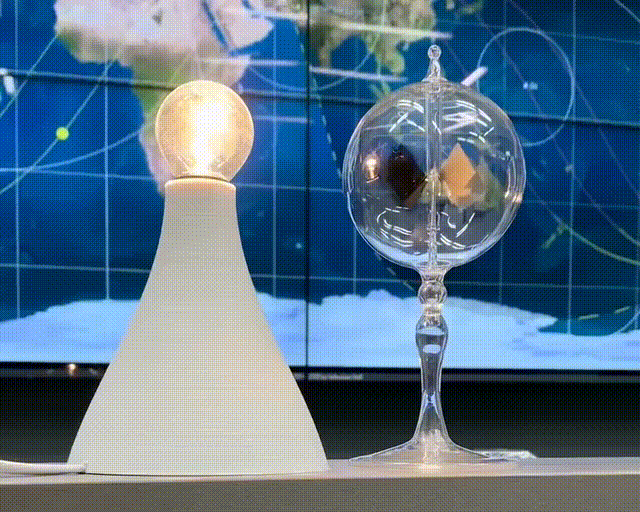
Thus, the students designed a solar sail - a propulsion device operating on the effect of the pressure of the solar electromagnetic radiation. It allows you to make interorbital and even interplanetary flights without spending a working fluid (fuel).
The solar sail, which is being developed in the project, is a frameless thin-film structure, the rigidity of which is ensured by rotating the sail around the axis of symmetry. The concept of a two-bladed rotary solar sail has been proposed, which has a number of advantages over other types of solar sails - simplicity, the ability to fold the sail, etc.
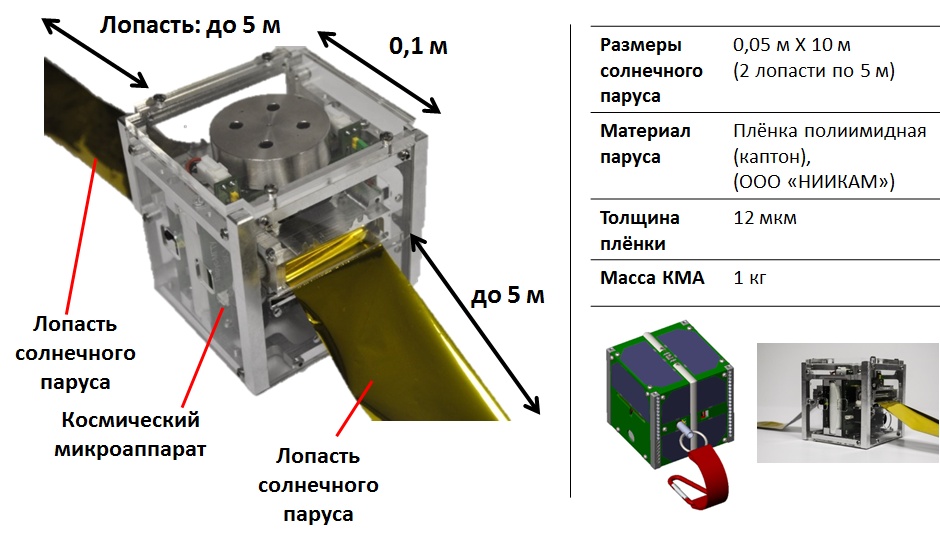
A satellite model with a two-bladed solar sail
Where do the satellites fly and what they consist of
Yarilo devices are in low Earth orbit 575 km with an inclination of 97.6 degrees. The estimated service life of the small spacecraft is 1 year - this is about 1500 turns around the Earth.
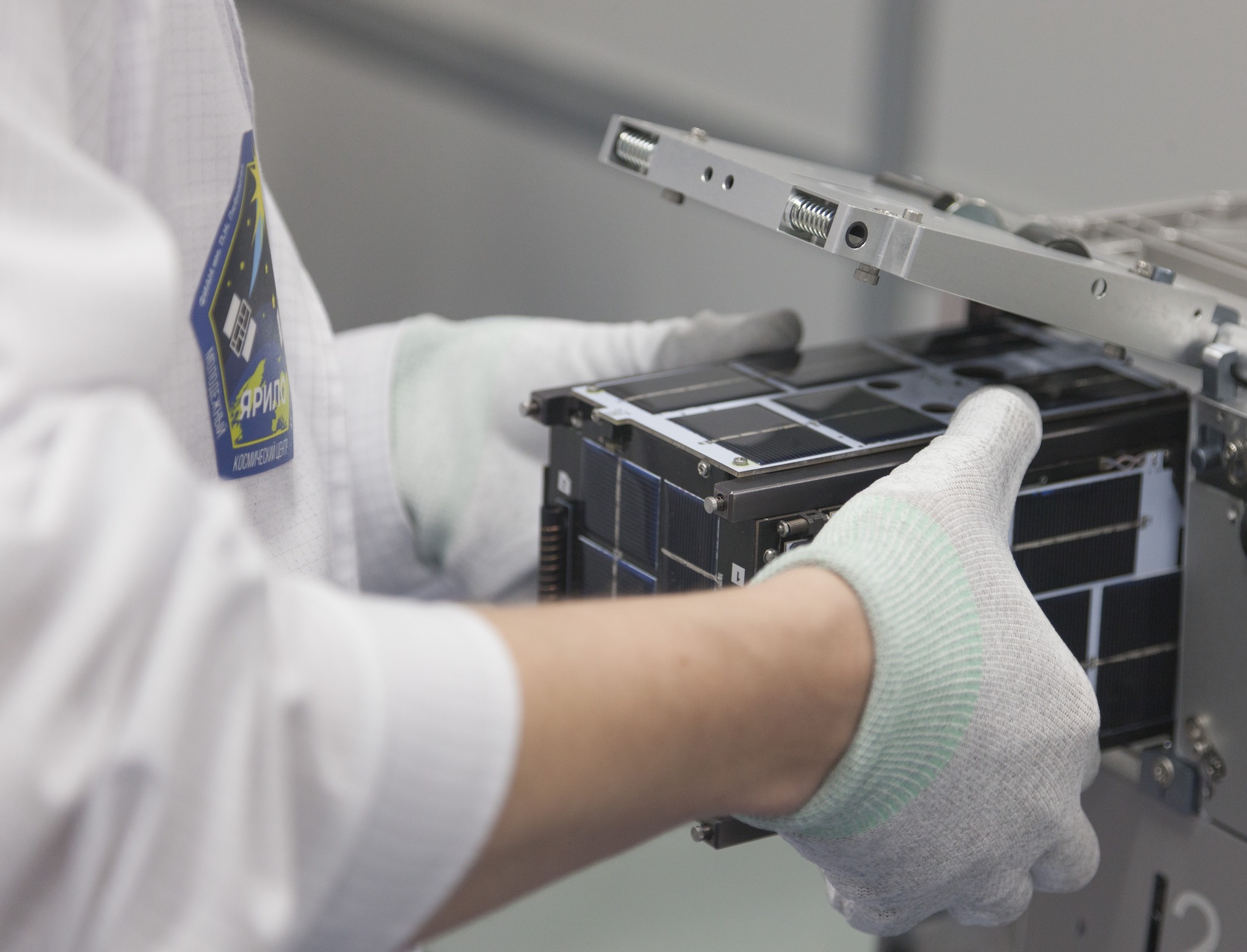
Loading the device into the launch container
In order for the vehicles to correctly determine their location and navigate in space on board, two unique on-board sensor units function, which include magnetometers, accelerometers and a solar sensor of its own assembly based on the FD-20K four-point photodiode. Moreover, there is a GLONASS receiver on the outer panel of the device, which allows determining the coordinates and speed of the spacecraft with high accuracy. There are also light sensors on each of the outer edges, which can also be used to determine the orientation, but less accurately.
Another important technical problem is the orientation of the apparatus with a spectrophotometer to the Sun. For its implementation, a pyramid of four flywheel motors is installed on board the apparatus, which allows building a three-axis orientation, and magnetic coils located on each of the faces of the apparatus, which allows them to form a magnetic field of various configurations. The magnetic orientation system is uniaxial, built on the principle of creating a control mechanical moment due to the interaction of the magnetic field created by the coil and the Earth's magnetic field. The control algorithms form the sequence of switching on and off the magnetic coils. In addition to the orientation to the Sun, the controls allow the apparatus to be twisted around its axis (it is needed so that the "Sails" ribbons were stretched during deployment) and to extinguish the large angular velocities of the apparatus,for example, if the device spun, flying out of the launch container (mode - damping). The operation of the orientation system was practiced by hanging the apparatus on a string.
All these tasks require a large amount of energy. There are two storage batteries on board the small spacecraft, which are regularly recharged using solar photocells located on the outer edges. This happens when the spacecraft is on the illuminated side of the orbit. By the way, the guys also developed the technology for their installation themselves. Electricity is supplied to consumer systems via 3.3 and 5 V power lines.
The "brains" of the apparatus are located in the on-board central computer, which controls all devices of the apparatus subsystems according to the flight sequence. The on-board computer is resistant to one arbitrary irreversible failure, therefore, for the device, a scheme with unloaded redundancy of two identical semi-sets of calculators was chosen. The calculators are based on STM32F205 microcontrollers manufactured by STMicroelectronics.

Simplified functional diagram of the devices
One of the most common questions asked by the development team: do you have cameras to get beautiful images of the Earth? There are cameras on board the satellite, as many as two, but they are needed in order to capture the process of deploying the solar sail.
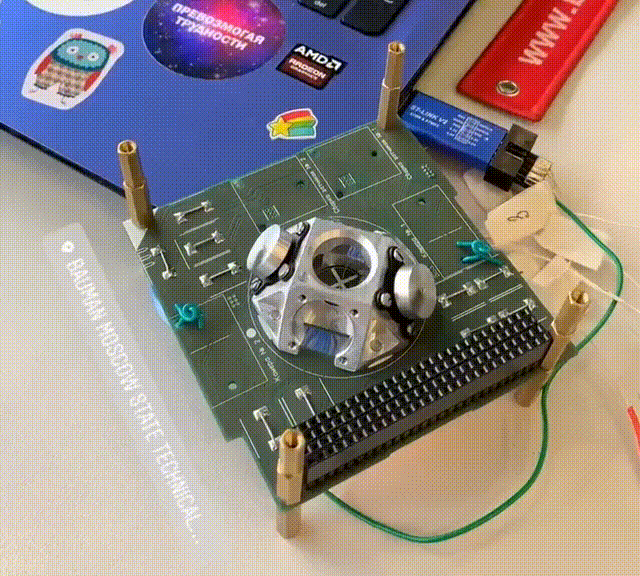
Development of algorithms for the operation of flywheel engines
Also, if you look closely at the photograph of the device, you will notice that it is two-color. In the illuminated part of the orbit, the spacecraft looks at the sun with the white side, which reflects light, and the black side intensely emits heat, and thus the satellite does not overheat. In the shadow part of the orbit, where it is necessary to increase the temperature of the apparatus, the dark side absorbs more energy, and the white gives off less heat. Also, for some devices that emit a lot of heat, specialists from the Skolkovo Institute and ILMiT, using 3D printing, made thermostatic housings with integrated heat pipes from a highly conductive aluminum powder alloy. And some of the hull parts of the small spacecraft, such as the battery cover and the sail module hull, are made by selective laser sintering.
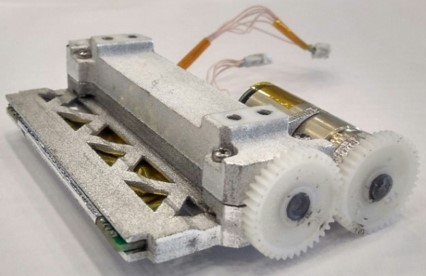
Sailing module hull
Transportation and testing
The satellites are transported to the cosmodrome in special shockproof foam cases. However, before the devices undergo a full cycle of mechanical and thermal vacuum tests. They are subject to stringent requirements for resistance to vibration, shock and quasi-static loads during their preparation and launch as part of a launch vehicle or upper stage as associated payloads. They are loaded up to 10 g.
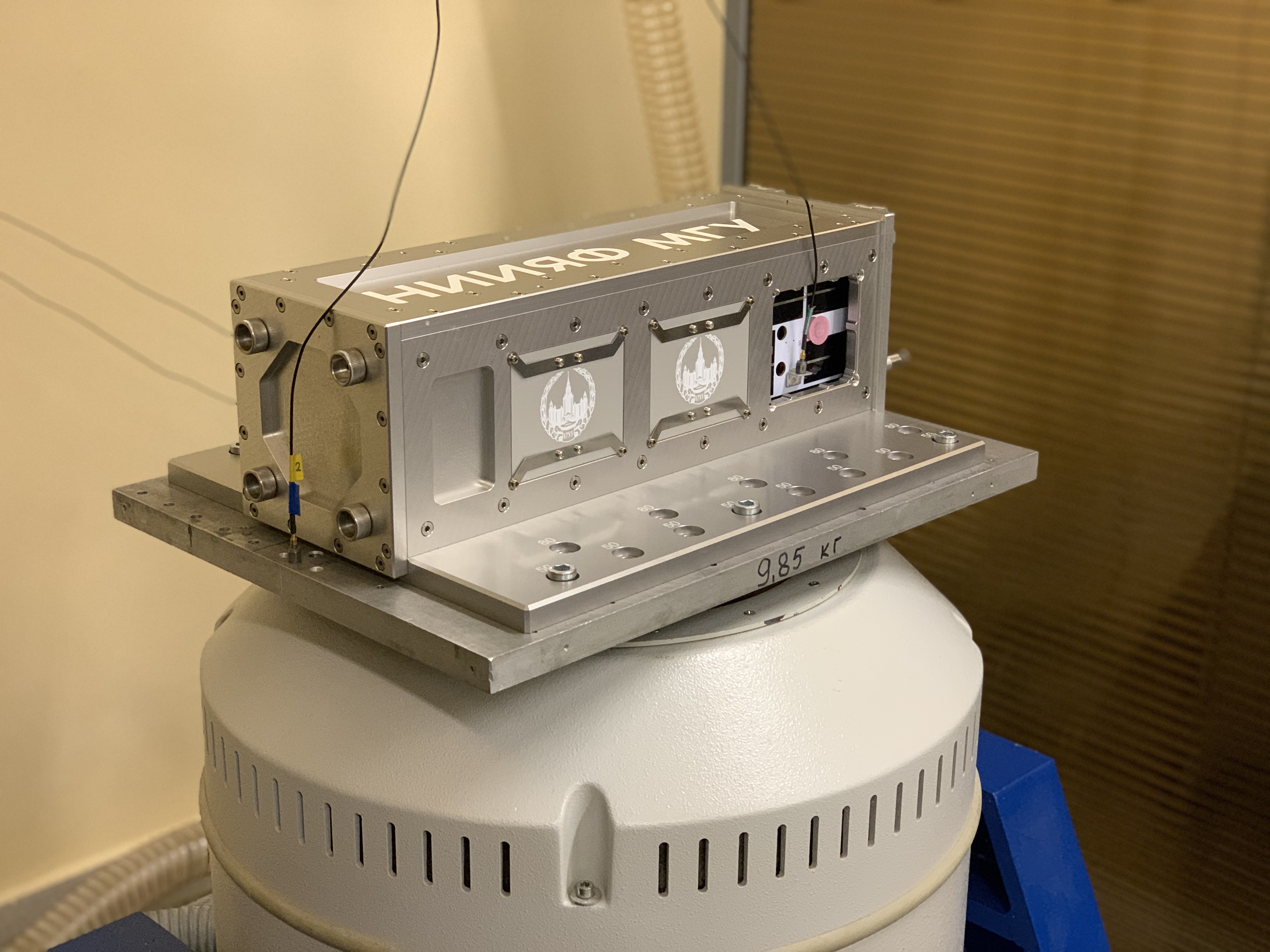
Vibration test
The temperature of the vehicle in flight can fluctuate within the range from a deep "plus" to a deep "minus" due to a sharp change in thermal regimes during the transition from the illuminated to the shadow part of the orbit, and back. The assumed temperature range for internal boards was from -30 to +60 ° , for external panels - from -70 to +80 ° .

Thermal vacuum tests
Operation in orbit
While the satellite is flying, all telemetry and useful information received by it are stored in its memory (FRAM). From there the information gets to the Earth thanks to the transmitting and receiving antennas on the device (two spiral antennas of the VHF range are used on Yarilo) and ground antennas, which are located right on the roof of the "Special Engineering" building. When a satellite flies over Moscow in the radio visibility zone, the antenna receives a signal from it. Communication with the satellite can be maintained for five minutes if the satellite's path passes exactly over Moscow, or for about a minute if the zone only "touches" the city.
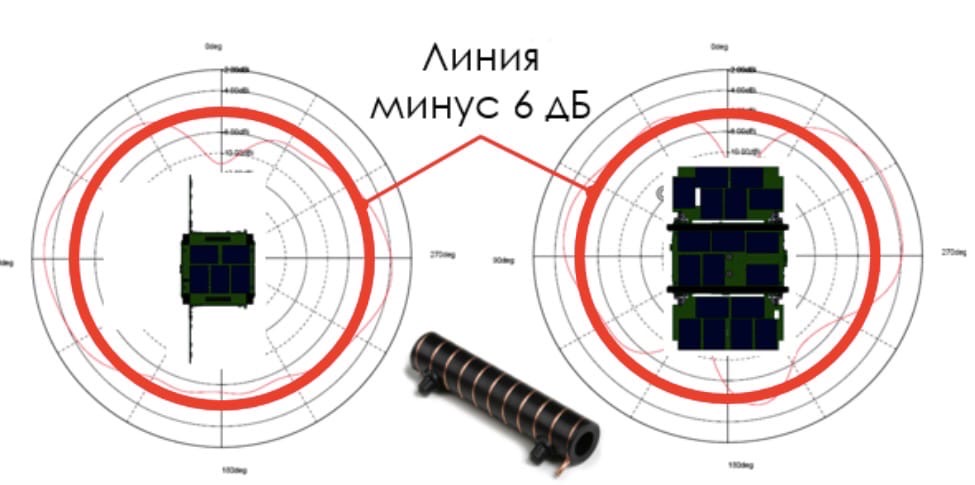
Antenna radiation pattern on Yarilo vehicles
All the necessary target information collected from the sensors is transmitted from the satellite to the Earth during this period of time: position and orientation, angular velocities, temperature, state of storage batteries and solar batteries. From the Earth to the satellite, commands are transmitted to the satellite, which must be performed by the satellite: turning, issuing certain telemetric information, opening the sail, etc.
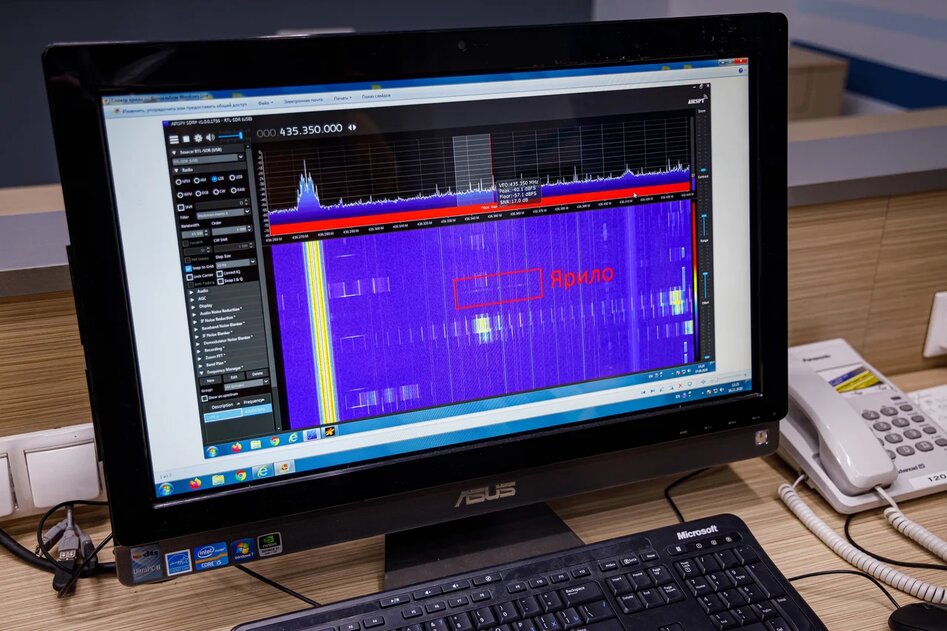
In this project, MSTU is the executor and receives the necessary information from its own satellites Yarilo-1 and Yarilo-2 ... And already the subsequent processes of studying and analyzing data take place in other specialized laboratories and Centers of Moscow State University and FIAN, as well as in Roshydromet.
In addition, satellites are an experimental base for developing new technologies: solar sail technology, individual service systems and, in general, for testing our own nanosatellite platform.
In addition to the work associated with the MCC, the Youth Space Center has many other interesting projects. Among them are a small descent vehicle for the rapid delivery of biological samples from the ISS, a project for a "small" rocket that could launch small amounts of payload, work with schoolchildren and participation in various international exchange programs. In new articles, we will tell you about other projects of the Center to make outer space closer to you.